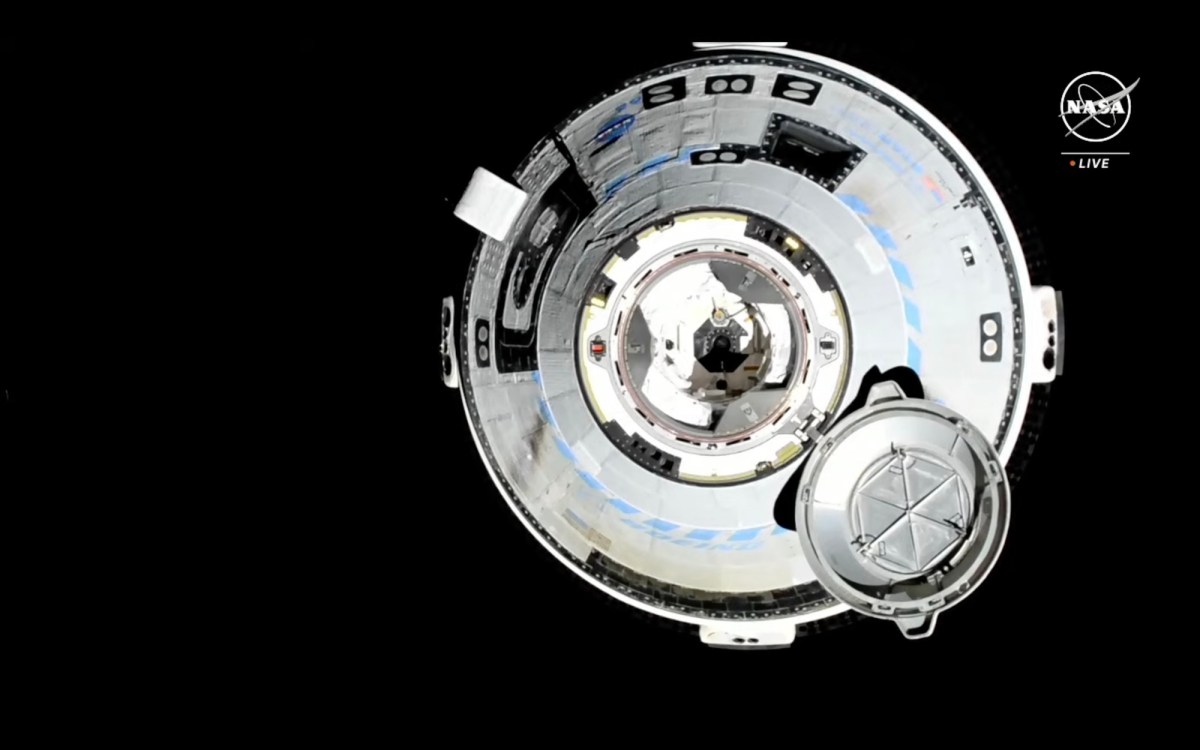Updated 7:10 p.m. Eastern with comments from post-docking briefing.
CAPE CANAVERAL, Fla. — Boeing’s CST-100 Starliner spacecraft docked with the International Space Station on its first crewed flight June 6 after working through problems with the spacecraft’s thrusters.
The spacecraft docked with the forward port on the station’s Harmony module at 1:34 p.m. Eastern, nearly 27 hours after its launch from Florida on the Crew Flight Test (CFT) mission. On board Starliner are NASA astronauts Butch Wilmore and Suni Williams, who entered the station about two hours after docking.
That docking took place more than an hour behind schedule as engineers worked on as many as five reaction control system (RCS) thrusters that went offline during various phases of the spacecraft’s approach. Space station controllers kept Starliner outside the 200-meter “keep out sphere” of the station while working to bring those thrusters back into operation.
It was not immediately clear what caused the thrusters to malfunction. At a post-docking briefing, NASA and Boeing officials said that they were able to get four of the five thrusters working again, allowing the docking to proceed. The problem, they said, is similar to what they saw on the Orbital Flight Test 2 (OFT-2) uncrewed test flight in May 2022, with thrusters in the same location of the service module being turned off both times. “We don’t understand quite why they’re happening,” said Steve Stich, NASA commercial crew program manager.
The problem is less with the thrusters themselves with the software that controls them and the data that software receives from the them. Stich explained that when the software seems some parameter out of limits, like lower thrust than expected or taking longer to ramp up, the software will disable it. Controllers then fired individual thrusters to confirm they were working to re-enable them.
“The thrusters worked great, and by refiring them we proved that,” said Mark Nappi, Boeing vice president and commercial crew program manager. “It’s the conditions that we’ve put into the software that is somehow telling the thruster to be de-selected.”
Late June 5, NASA and Boeing said that spacecraft controllers had detected two more helium leaks in Starliner’s propulsion system. These were separate from the helium leak detected after a scrubbed May 6 launch attempt, and took some thrusters offline.
Mission managers approved plans to allow the docking to proceed early June 6, deciding to use extra helium to repressurize the system and re-enable the thrusters. Stich said that, after docking, controllers found a fourth helium leak in the spacecraft, smaller than the other three.
What is causing the helium leaks is not clear, but Nappi did not rule out a common root cause. “They’re very similar in the way that they’re behaving, so there’s a good reason to believe that they may be similar,” he said.
Before the launch, officials said the believed the one helium leak then known on Starliner was an isolated issue to a defect in a seal. “It certainly is something that we’re going to reevaluate,” Nappi said of that earlier conclusion.
With Starliner now docked with the station, propulsion system manifolds are now closed, stopping the leaks. Stich and Nappi said that they have more than enough helium at current leak rates to allow Starliner to undock and return home, and will use the time docked at station to investigate what could be causing the leaks.
Starliner is scheduled to remain docked to the station for at least eight days, although agency officials said at a post-launch briefing June 5 that they will keep Starliner at the station longer to complete planned tests.
Despite the thruster issues and helium leaks, officials said they believed the mission was going well overall, and chalked up the problems to problems one expects to find in early flights of new vehicles.
“We have two problems on the vehicle right now,” Nappi said, referring to the helium leaks and thruster shutdowns. “Those are pretty small, really, issues to deal with. We’ll figure them out for the next mission. I don’t see these as significant at all.”
Wilmore said in a communications session June 5 that he and Williams were largely pleased with the performance of the spacecraft as well as the experience of launch. At that point in the mission, about six hours after launch, he said that the mission was going “fabulously.”
He specifically called out the ability of the spacecraft to perform manual maneuvers. “Suni and I have both done some manual maneuvering, and it is precise,” he said. “Much more so than the simulator.”
Williams highlighted the suits developed for Starliner that she and Wilmore wore. “They are really great suits: easy to operate in, easy to move around in,” she said. “It’s another great day in space.”
